Usually when we think of Russia by extension we fall short of so much to see. If we choose tourism by city of course Moscow promises an interesting journey to the most representative in the Russian culture in hybridization with different civilizations that left their mark there. Do not think that this city becomes visible at first sight, you will have to spend days to explore its great facades and palaces of different times and significant historical threads. Everything that makes the capital of Russia representative you will see in this tourist map of Moscow, in which we will give you the tips to tour it, comprising miles of tourist sites. Prepare your list and take note of our filter of places to visit, and take this Moscow street map to channel yourself into the heart of Mother Russia, of the tsars and the communists.
Moscow Tourist Map
Contents
At almost 900 years old, Moscow has remained the epicentre of a murky history that managed to unify a vast expanse of land called Russia. But beyond these origins there are archaeological traces that go beyond the two thousand years of the Christian era, where man has made life in complex forms of civilization. Today it serves as the capital of the Federation. The city, once a walled fortress, began with rudimentary defense systems typical of the medieval era, which, when subsequent reigns took place, expanded and managed to build large brick walls that today constitute the Kremlin. We are talking about the principality of Yuri Dolgoruki until the time of Ivan the Terrible. Moscow confirms its past made of wood by remains that tell of the consummation of its ancient buildings by enemy fire, a city highly coveted by invaders, as well as strategic in road communications.
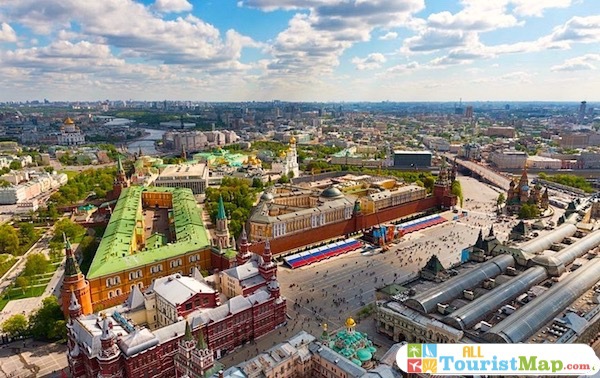
A city that was at the head of the feudal regimes had a participation in the conformation of a new model of state when giving transition of the czars to the republic and later union of Soviet nations. As a result, the foundations were laid to declare the Euro-Asian giant a superpower that would rival the United States in technology, armaments and geopolitics. This Capital witnessed the high and low political trials of the modern era and struggled between the advancement of a city with an urbanistic evolution, always taking its main historical architectural attributes identity and its own sense of culture. The Kremlin, the Red Square and Kitai-Gorod are three important nuclei from which we can derive hundreds of tourist places of obliged visit, each one of them with a history and an image that you will never forget, like a mixture of east and west.
Tourist Guide of Moscow
You don’t need to become an expert on this complex capital. In our Moscow tourist guide we will show you the importance and reasons for visiting its main places, what secrets they hide and what adventures await us on the journey to historical and cultural centers. Even note that they have places of great importance to which we will treat more attention as we advance in our post. Ideal to help you make the best decision for your next vacation. We want you to have the best information regarding places, routes, accommodation and the best aerial views taken in their main viewpoints. If you are passionate about the time of the czars, the revolution, and even further back, some of their places will give you the clue you need to understand better while you cultivate the astonishment at the opulence they contain.
Route of tourist places in Moscow
What to visit in Moscow
Kremlim
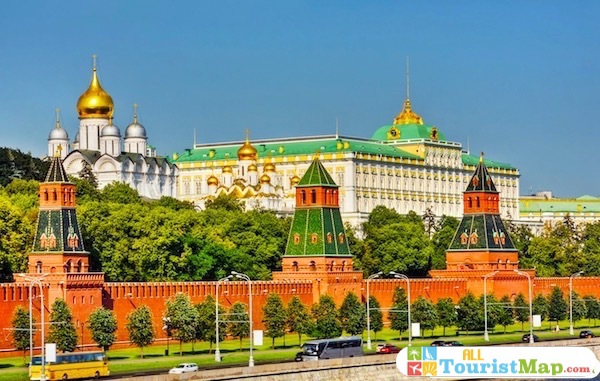
Archaeological remains, and beautiful image of buildings of great proportions. In the distance you can see pronounced European details, commissioned by Ivan III to this group of buildings that occupy the heart of the Capital. We do not exaggerate when we invite you to have one of the most pleasant architectural experiences. There are museums, palaces, buildings and curiosities, or the twenty or so towers that can be easily seen if you walk around the Moscow. This citadel went from being the seat of the court, to the seat of all the Soviet power. The interior can be done in an orderly manner, including the Arsenal. Followed by the Senate to which you can admire its facade, given its reserved availability to the public. The Congress Hall or Kremlevskiy Dvorets Siezdov will enchant you, given the fine materials and dimensions that you can enjoy if you attend an event that takes place in its capacity.
Red Square
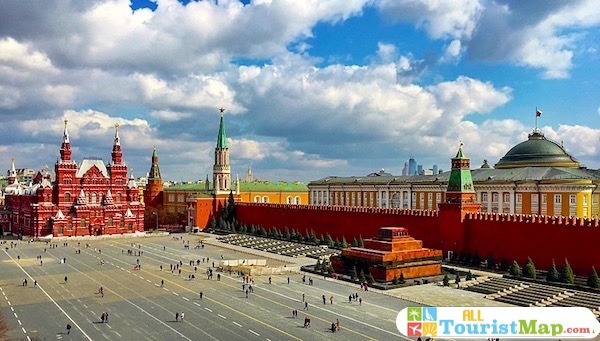
The Red Square is undoubtedly one of the most important squares in the world, in terms of size and historical value. The life of Russia is framed along its almost 700 meters are the main monuments. Much of the history and communist symbolism can be seen there, such as the mausoleum of Lenin, as well as a present of the Paris Commune rests on its entrance. We can direct our attention to its back where the remains of Stalin and other communist leaders also rest. The State Historical Museum is the oldest in the country and therefore gains importance by having hundreds of thousands of works on display. The GUM stores and St. Basil’s Cathedral adorn the edges of the square.
St. Basil’s Cathedral
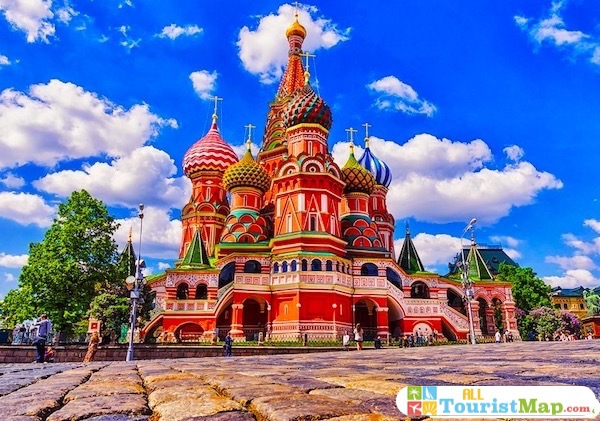
One of the representative images of Russia to the world. Now you will have the opportunity, in the middle of Red Square, to admire all the splendour of its domes and extravagant forms that surround its towers. Built as a tribute to Kazan’s campaign, you are sure to have a full tour to understand more about its complex history. It was originally known as the “Cathedral of the Intercession of the Virgin by the Moat”, with a moat being the place next to the church and which served as a support for the walled enclosure. In reality this group of domes corresponds to 9 churches that are internally connected to each other. It leaves the understanding of different periods reflected in the respective architecture. In spite of threats of collapse by French invaders and the communist regime this church today has given a sign of strength. Its legacy remains intact to show you all its secrets today.
Lenin’s Mausoleum
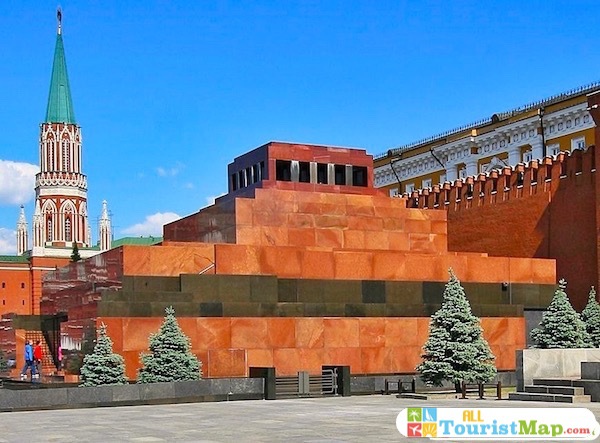
It’s typical to see tourists standing in long lines to get in. It’s a place where the time stops in the historical and revolutionary figure of the leader Vladimir Lenin, who is in a complex state of mummification. The curiosity of the people is encouraged more than by the morbidity of appreciating the body of the character, to be in front of who in life made great changes in the historical course of Russia. Entrance is free and it is only a matter of choosing a day; any day of the year when there is no need to stand in line. It was Stalin who imposed this practice on his predecessor. It is curious that in this ideological line around the world the practice was disseminated. So come on in and enjoy the stories of the guided tours. Other Russian personalities in the necropolis and the easily accessible atmosphere in Red Square.
Bolshoi Theatre

As a place for culture and interpretation there are no two in Russia. The Bolshoi Theatre is the greatest exponent of classical architecture, the largest. Just like the fame it has acquired around the world. Great composers like Tchaikovsky, great dancers, and important works like the Nutcracker, Romeo and Juliet or Sleeping Beauty have been performed and associated with the figure of this legendary place. Its present appearance is the result of several reconstructions as a consequence of fires and landslides, managing to acquire its last established styles. The visits include tours that cover the backstage and internal corners of the building. A guide in Spanish will be able to bring you closer to the fascinating history, and even be in the middle of the room. If you’re lucky, you might even get to see a rehearsal that takes place behind closed doors.
Cathedral of the Assumption
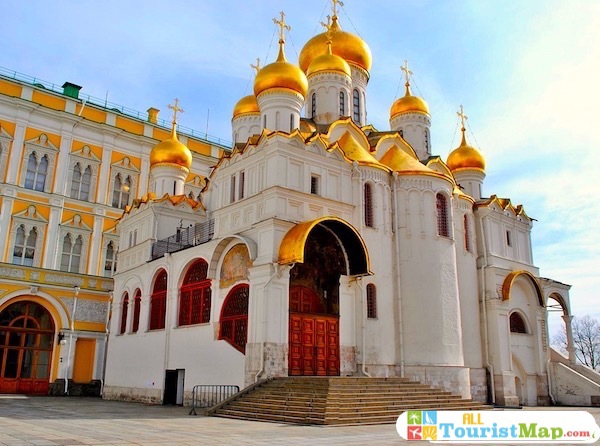
The influence of the Renaissance intermingles with traces of architectural Russia to create a landmark of utmost importance for Orthodox culture and religiosity. Ivan III made the order to add another jewel, with impeccable golden domes. Its interior stands out for the figure of St. George and the Virgin of Vladimir. Such was its opulence that during the Napoleonic invasions a considerable amount of gold and silver was extracted. The main lamp was carved out of the precious metal in what was recovered after the French retreat. It was an important place for the coronations of Tsars and the tomb of high ecclesiastical and civil hierarchs. The passing of time is not in vain when it comes to monumental constructions. This Cathedral is an interesting stopping point for lovers of Diocesan art from the 13th to the 17th century; its frescoes and figures are magnificent works of veneration.
Almazniy Fond
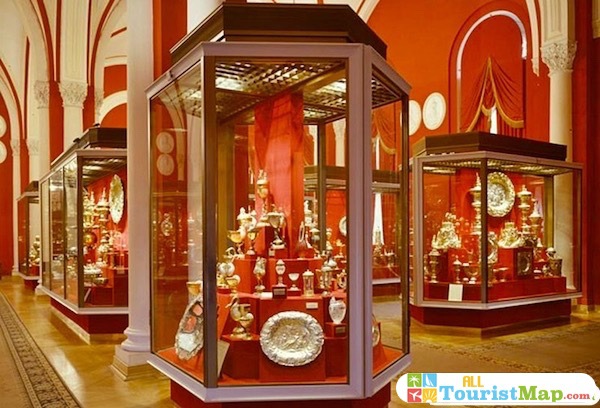
Known as The Diamond Fund, it represents Russia’s true treasure. You’d better prepare your eyes for so many flashes of cut and natural diamonds. Precious metals, too, which more than just materialism, are of significant historical value. The collection of the same name is the main and permanent one, which started to be exhibited and increase its size since Peter the Great, resolving that those jewels do not only belong to the crown but to the State as such. In addition to royal jewels, works by different goldsmiths are displayed in its two rooms. The most important pieces we can find are: the Yakutia diamonds, highlighting the diamond of the same name of about 232 carats, perhaps the largest on display; the great Imperial Crown dedicated to Catherine II, the Shah Diamond, guardian of Indian legends, and the Orlov Diamond embedded in the scepter of the Tsars.
Kitai-Gorod

It’s to add more spice to our tour of the capital. We’ll travel to another intramural citadel with a name of peculiar Mongolian origin. Considered the oldest suburb, it includes the oldest commercial area. Here, the guilds are distributed by streets, which in ancient times reached a considerable number of jobs. Today’s hotel industry, commerce and institutions keep the pulse of this citadel beating. There are many stops on a guided tour, every corner deserves a break just to immerse oneself in its history. Noguina Square is famous for having one of the most beautiful churches in Moscow. It is known for its Moorish mixture with Russian architecture corresponding to the 17th century. In its surroundings you can also visit the building that was the headquarters of the Soviet communist party, and the museum of industrial evolution.
Central Museum of Decorative Arts

Beautiful museum you can’t miss. It currently occupies a place next to the State Armory Palace. Its relics of the Patriarchal Russia show the most voluminous and exuberant in jewels; representative symbols of those times of glory. You are sure to be amazed at the ivory throne of Ivan the Terrible, or the throne of thousands of pecious stones by Aleksei Mikhailovich, or the 24-kilogram cape by Nikon. It feels like being in the limelight, where all the goldsmiths of the ancient world put their best effort into these magnificent royal jewels. Other pieces made up of antique toys, such as Matrioskas, fine ceramics, textiles and works from the Soviet era complement the collection of the old and modern Russian tradition.
Map of hotels in Moscow
A capital as developed and large as Moscow is sure to be full of accommodations. But as far as the most visible options are concerned, they easily put a strain on any budget. Our map of hotels in Moscow is here to help you visualize all the options on the map of the capital. It is ready to link you with all the information you need, price, services, location and access to transport. It is important to address all these aspects, as it is a big city. However, there are many places that concentrate various types of accommodation such as Kitai-gorod, Arbat or the district of Khamovniki. The Maroseyka Hotel is located near the Red Square and the subway. For the attention and price we can give you this recommendation, also for its excellent location.
